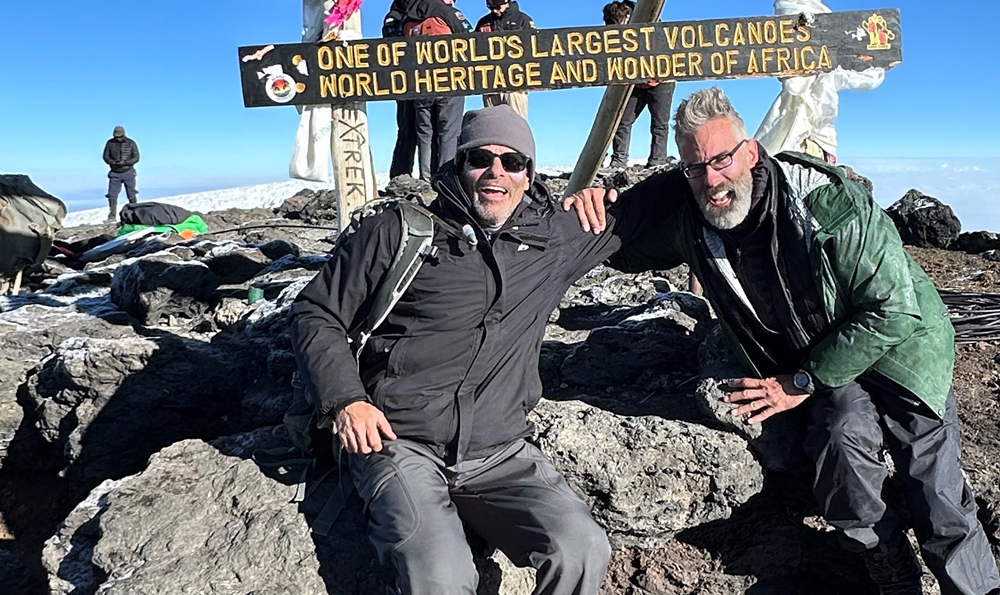To celebrate his 60th birthday, Thomas, from Branchburg, NJ, set out to summit one of the highest peaks in the world. His climb to the top of Mount Kilimanjaro wasn’t just to conquer the mountain, it was really to challenge himself—even with a decades-old knee injury.
Fortunately, with the right mix of nonsurgical treatments, Atlantic Health sports medicine physician Robert Monaco, MD, helped make Thomas’ summit—and his dream—a reality.
Finding the right support
“My knee had been giving me trouble for years, ever since I tore my patellar tendon,” says Thomas. “But I love hiking and exploring, so I needed to find a doctor who could get me maximum performance from this bad joint.”
Initially, Dr. Monaco came into the picture in 2021 when Thomas’s knee pain threatened his hiking trip through the volcanos and glaciers of Iceland. A simple online search led Thomas to Dr. Monaco’s office and their relationship grew from there.
“Dr. Monaco got me through that first trip with PRP shots,” he said, referring to platelet-rich plasma therapy that uses a patient’s own blood cells to promote healing in damaged joints.
A tailored plan for major goals
But by the time Thomas was ready to start training for Mount Kilimanjaro, the PRP injections no longer eased his pain. So, Dr. Monaco introduced a new option known as shockwave therapy. This treatment uses powerful sound waves to stimulate healing around the injured area—and Thomas felt immediate results.
“Dr. Monaco looked at my goal—Kilimanjaro—and worked backward from there. He started with physical therapy, added in timed hyaluronic acid shots, then shockwave therapy, and finally cortisone injections just before the trip. I trusted his methodical approach, and it worked for me.”
Climbing the mountain
Thomas’s journey began on July 1, 2025, when he flew to Tanzania with his brother and a friend. The eight-day climb started in the jungle and gradually ascended to a final push on summit day that reached over 19,000 feet.
“That last day at midnight we started with very little sleep from base camp at about 15,000 feet. It was cold, windy, and the air kept getting thinner and thinner. It was really tough, but my knee felt strong.”
Thomas pushed through and made it to the top. “It was beautiful, and surreal. We were above the clouds,” he recalls.
Once the excitement settled and it was time for the descent, Thomas had to mentally prepare for what would be the most difficult part of the climb. “Going down the mountain was the only time during the entire trip when I felt knee pain,” he said. “The downhill pounding on my legs all day was really hard on my knees.”
Looking ahead and staying grounded
While there are no plans for another major exploration right now, Thomas isn’t ruling anything out. He now knows that even when joint pain feels like it's gotten the best of him, extreme adventures are still within reach.
“I feel like a Toyota with 250,000 miles on it,” says Thomas. “With the help of Dr. Monaco and his team, I probably have another 100,000 left in the tank.”












